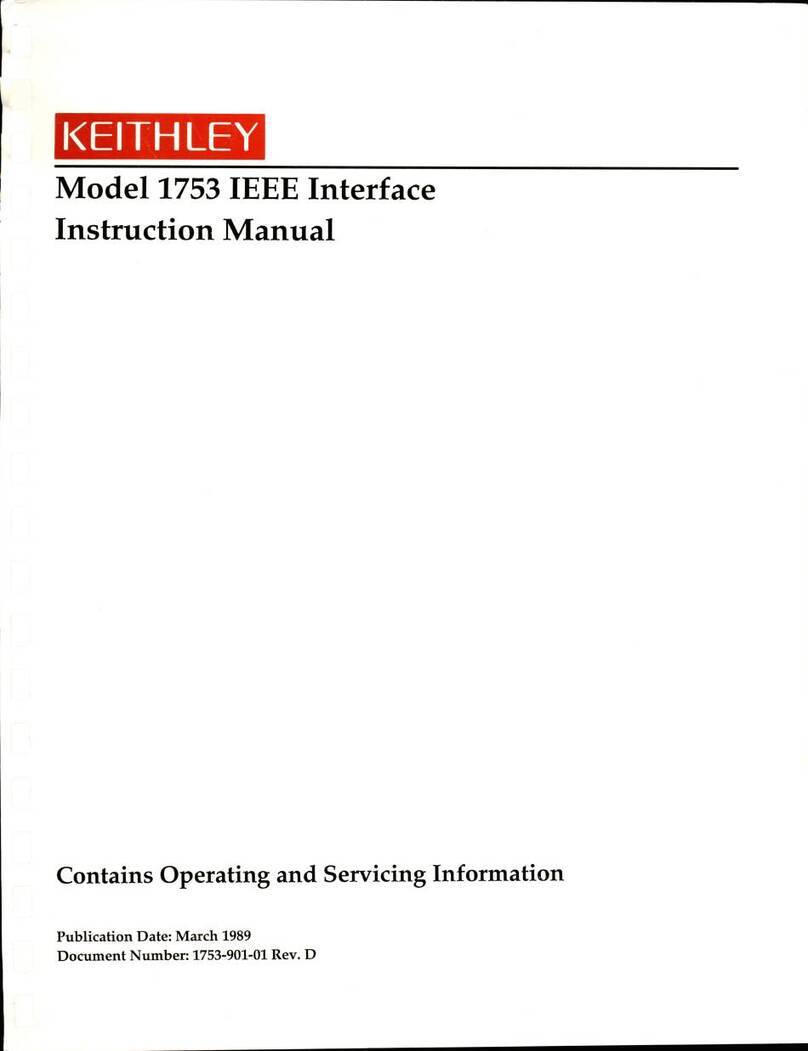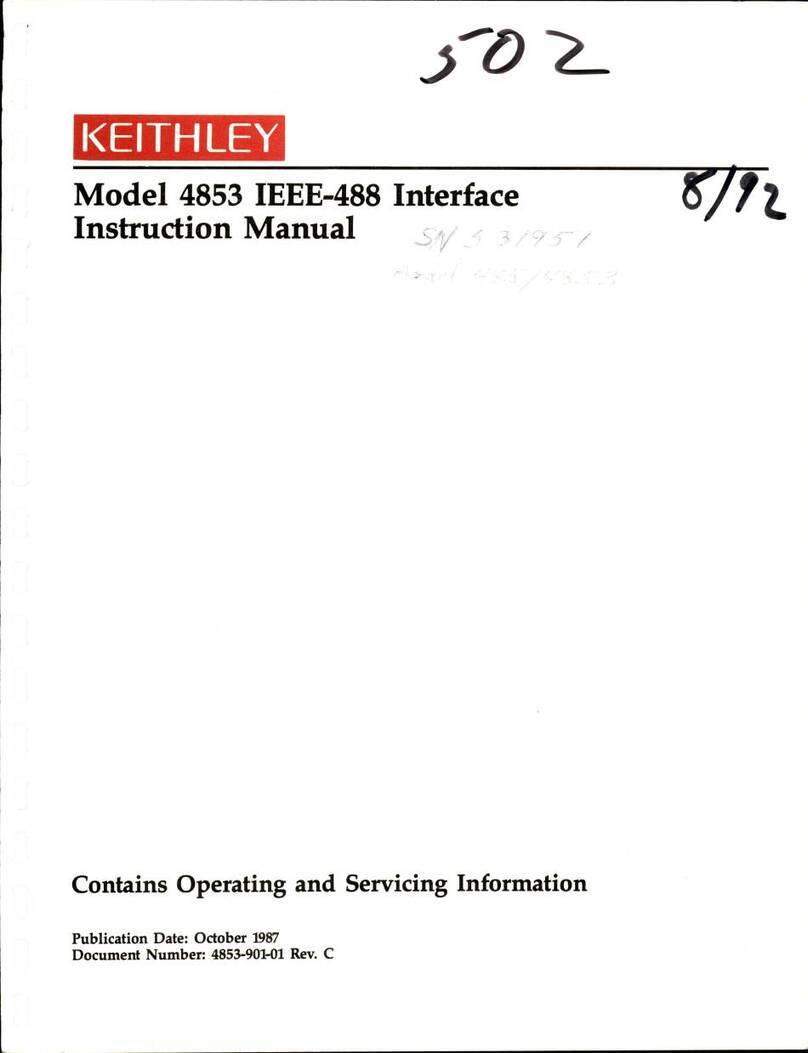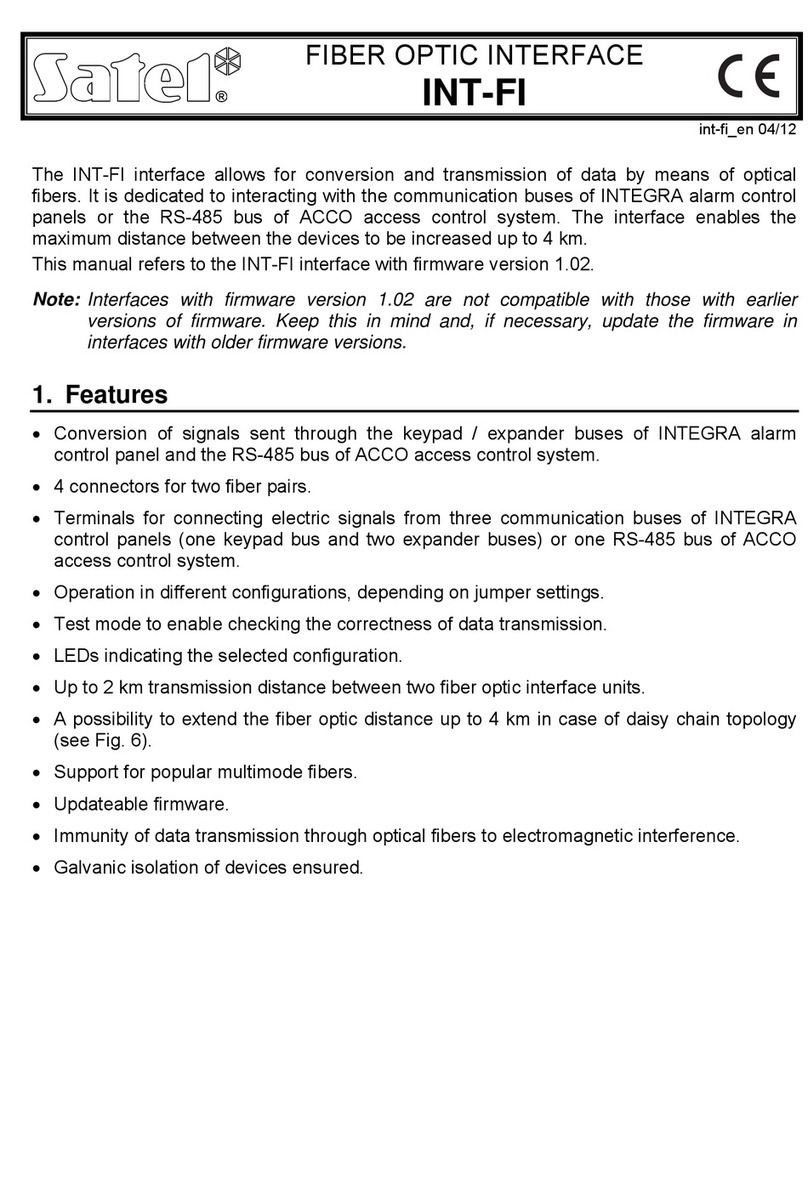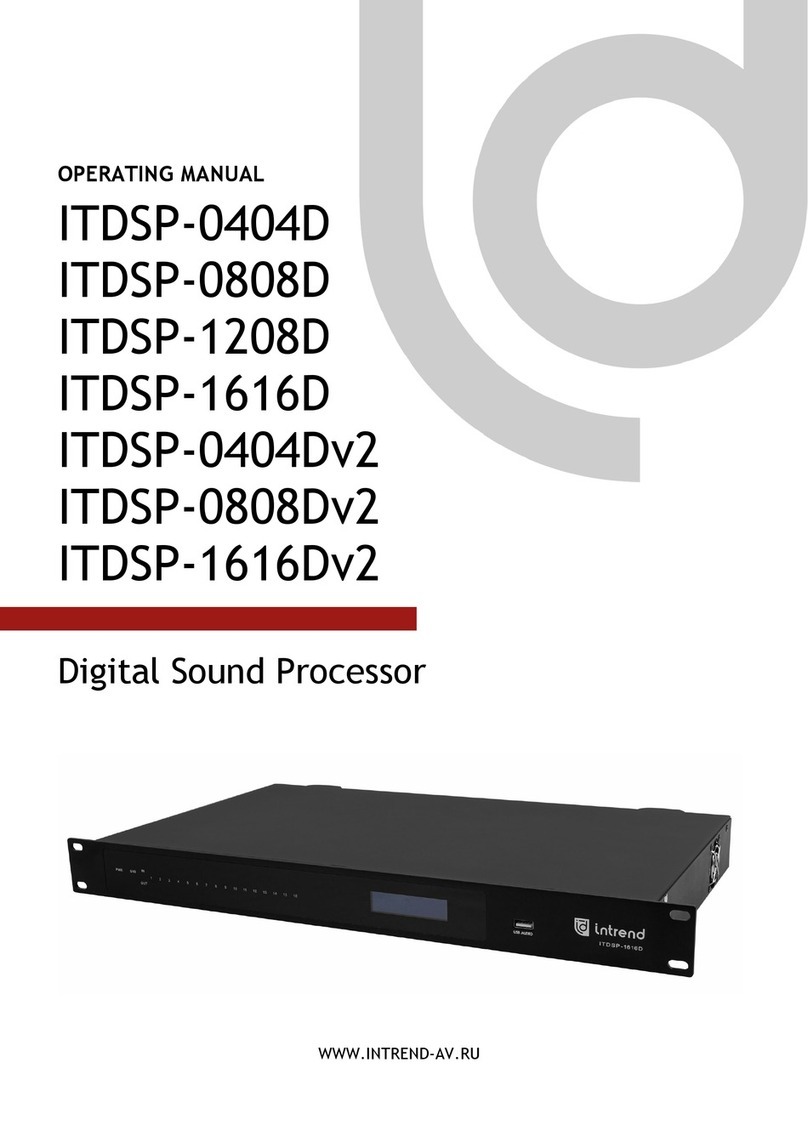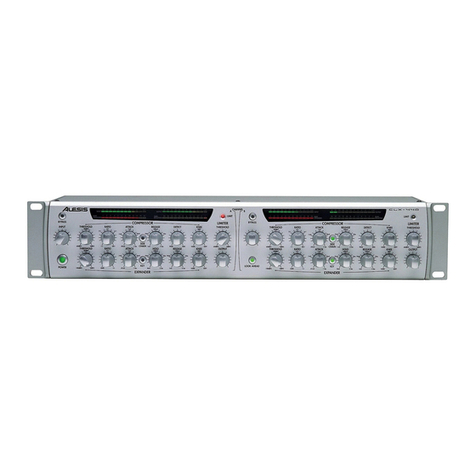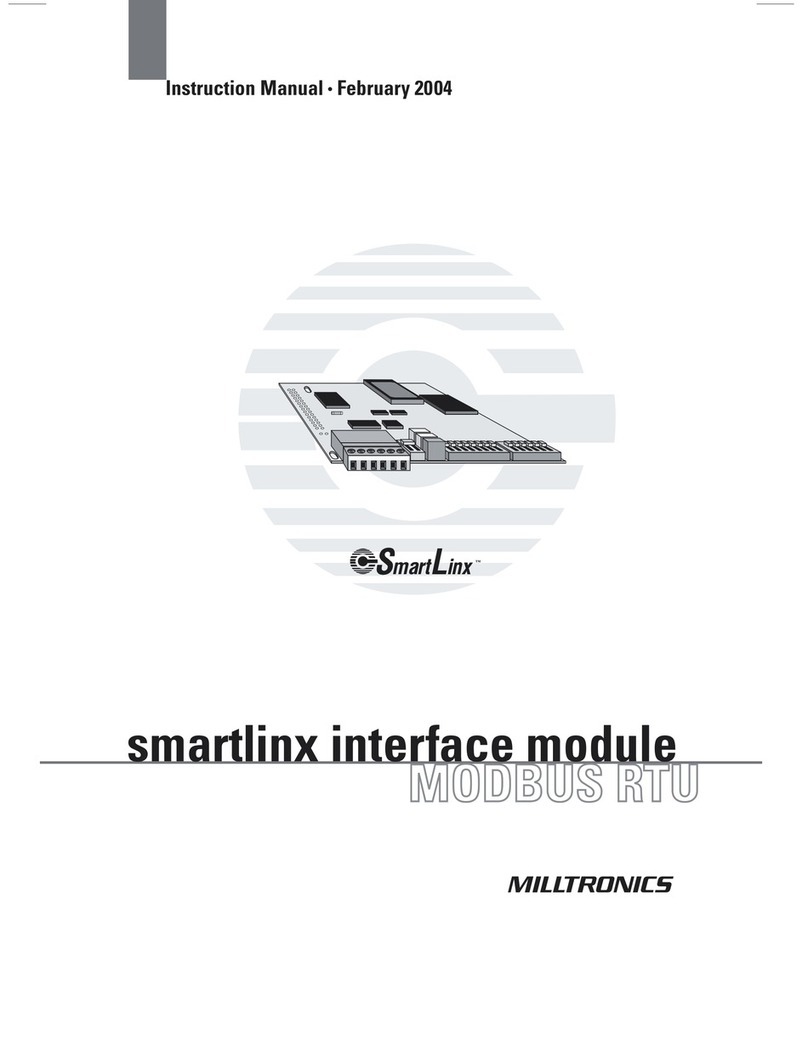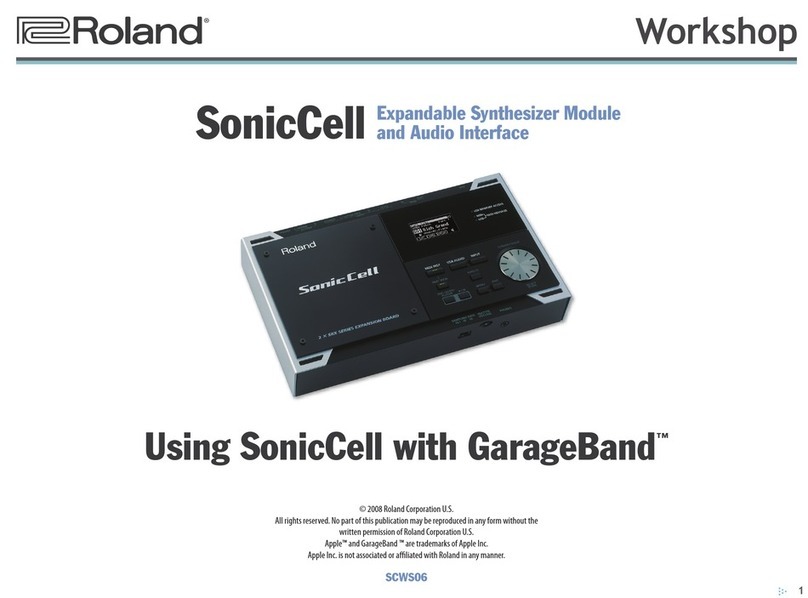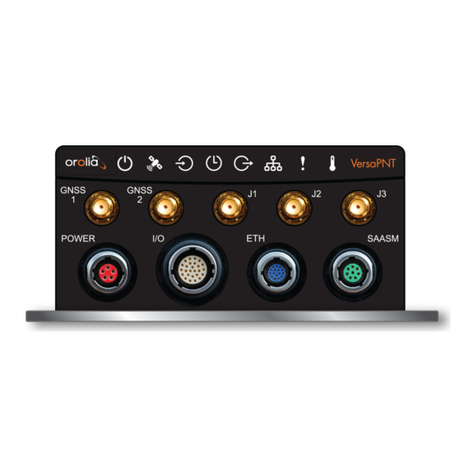Keithley 1973 User manual

KEITH
LEY
Model
1973/1972
IEEE-488
Interface
Instruction
Manual
Contains
Operating
and
Servicing
Information
Publication
Date:
June
1991
Document
Number:
1973-901-01
Rev.
C

WARRANTY
Keithley
Instruments,
Inc.
warrants
this
product
to
be
free
from
defects
in
material
and
workmanship
for
a
period
of
1
year
from
date
of
shipment.
Keithley
Instruments,
Inc.
warrants
the
following
items
for
90
days
from
the
date
of
shipment:
probes,
cables,
rechargeable
batteries,
diskettes,
and
documentation.
During
the
warranty
period,
we
will,
at
our
option,
either
repair
or
replace
any
product
that
proves
to
be
de
fective.
To
exercise
this
warranty,
write
or
call
your
local
Keithley
representative,
or
contact
Keithley
headquarters
in
Cleveland,
Ohio.
You
wiU
be
given
prompt
assistance
and
return
instructions.
Send
the
product,
transporta
tion
prepaid,
to
the
indicated
service
facility.
Repairs
will
be
made
and
the
product
returned,
transportation
prepaid.
Repaired
or
replaced
products
are
warranted
for
the
balance
of
the
original
warranty
period,
or
at
least
90
days.
LIMITATION
OF
WARRANTY
This
warranty
does
not
apply
to
defects
resulting
from
product
modification
without
Keithley's
express
writ
ten
consent,
or
misuse
of
any
product
or
part.
This
warranty
also
does
not
apply
to
fuses,
software,
non-re
chargeable
batteries,
damage
from
battery
leakage,
or
problems
arising
from
normal
wear
or
failure
to
follow
instructions.
THIS
WARRANTY
IS
IN
LIEU
OF
ALL
OTHER
WARRANTIES,
EXPRESSED
OR
IMPLIED,
INCLUDING
ANY
IMPLIED
WARRANTY
OF
MERCHANTABILITY
OR
FITNESS
FOR
A
PARTICULAR
USE.
THE
REMEDIES
PROVIDED
HEREIN
ARE
BUYER'S
SOLE
AND
EXCLUSIVE
REMEDIES.
NEITHER
KEITHLEY
INSTRUMENTS,
INC.
NOR
ANY
OF
ITS
EMPLOYEES
SHALL
BE
LIABLE
FOR
ANY
DIRECT,
INDIRECT,
SPECIAL,
INCIDENTAL
OR
CONSEQUENTIAL
DAMAGES
ARISING
OUT
OF
THE
USE
OF
ITS
INSTRUMENTS
AND
SOFTWARE
EVEN
IF
KEHHLEY
INSTRUMENTS,
INC.,
HAS
BEEN
ADVISED
IN
ADVANCE
OF
THE
POSSIBILITY
OF
SUCH
DAMAGES.
SUCH
EXCLUDED
DAM
AGES
SHALL
INCLUDE,
BUT
ARE
NOT
LIMITED
TO:
COSTS
OF
REMOVAL
AND
INSTALLATION,
LOSSES
SUSTAINED
AS
THE
RESULT
OF
INJURY
TO
ANY
PERSON,
OR
DAMAGE
TO
PROPERTY.
KEITHLEY
Keithley
Instraments,
Inc.
•
28775
Aurora
Road
•
Cleveland,
Ohio
44139
•
(216)
248-0400
•
Fax:
(216)
248-6168
AUSTRIA:
Keithley
Instruments
GesmbH
•
Roscnhugelstrasse
12
•
A-1120
Wien
•
0222-804-6548
•
Fax:
0222-804-3597
FRANCE:
Keithley
Instruments
SARL
•
3
Allee
des
Garays
•
B.P.
60
•
91121
Palaiseau
Cedex
•
01-60-11-51-55
•
Fax:
01-60-11-77-26
GERMANY:
Keithley
Instruments
GmbH
•
Landsberger
Str.
65
•
D-8034
Germering
•
089-849307-0
•
Fax:
089-84930759
GREAT
BRITAIN:
Keithley
Instruments,
Ltd.
•
The
Minster
•
58
Portman
Road
•
Reading,
Berkshire
RG3
lEA
•
0734-575666
•
Fax:
0734-596469
TALY:
Keithley
Instruments
SRL
•
Viale
S.
Gimignano
38
•
20146
Milano
•
02-48303008
•
Fax:
02-48302274
JAPAN:
Keithley
Instruments
Far
East
KK
•
Sumiyoshl
24
Bldg.,
Room
201
•
2-24-2
Sumiyoshi-eho
•
Naka-ku,
Yohohama
231
•
81-45-201-2246
•
Fax:
8145-201-2247
NETHERLANDS:
Keithley
Instruments
BV
•
Avehngen
West
49
•
4202
MS
Gorinchem
•
Postbus
559
•
4200
AN
Goiinchem
•
01830-35333
•
Fax:
01830-30821
SWITZERLAND:
Keithley
Instruments
SA
•
Kriesbachstrasse
4
•
8600
Dubendorf
•
01-821-9444
•
Fax:
01-820-3081
TAIWAN:
Keithley
Instruments
Taiwan
•
Room
1105,11th
Floor,
No.
147
•
Section
2,
Chien
Kuo
North
Road
•
Taipei,
Taiwan
R.O.C.
•
886-2-509-4465
•
Fax:
886-2-509-4473

KEITH
LEY
Model
1973/1972
IEEE-488
instruction
Manual
Addendum
INTRODUCTION
This
addendum
to
the
Model
1973/1972
Instruction
Manual
is
being
provided
in
order
to
supply
you
with
the
latest
information
in
the
least
possible
time.
Please
incorporate
this
change
into
the
manual
immediately.
Add
the
following
information
to
paragraph
4.3.8
SRQ
Mask
(M)
and
Status
Byte
Format:
A
one-byte
length
variable
should
always
be
used
to
read
the
serial
poll
byte,
regardless
of
the
IEEE-488
interface
card
or
programming
language.
This
is
illustrated
m
the
example
that
follows.
Programming
Example
—
Routine
to
read
the
serial
poll
byte
using
a
National
GPIB
interface
card
with
Borland
Tiorbo
Pascal
v5.5:
{
Sample
serial
poU
read
routine
for
the
Model
1973/1972
}
procedme
read_serial_poll_byte;
var
serial_poll_byte
:
byte;
(*
Do
not
use
word
or
integer
type
*)
(*
Wait
imtil
reading
done
*)
begin
repeat
ibrsp(K197,
serial_poll_byte);
(*
K197
came
from
ibfind
*)
imtil
serial_poll_byte
<>
8;
end;
1973-901-02
Rev.
C/8-91

Instruction
Manual
Model
1973/1972
IEEE-488
Interface
Throughout
the
manual,
references
to
the
Model
197
also
refer
to
the
Model
197A;
references
to
the
Models
1973
and
1972
also
refer
to
the
Models
1973A
and
1972A
respectively.
©1991,
Keithley
Instruments,
Inc.
All
Rights
Reserved
Instruments
Division
Cleveland,
Ohio,
U.
S.
A.
Document
Number:
1973-901-01

SPECIFICATIONS
IEEE
OUTPUT
(Options
1972
and
1973)
Accuracy:
The
Model
197
accuracy
specifications
apply
to
the
instrument
if
either
of
the
following
two
conditions
are
met:
1.
Factory
Installation—The
Model
1972/3
is
installed
at
the
factory.
2.
Field
Installation—When
installed
in
the
field,
the
instrument
must
be
calibrated
and
operated
with
the
Model
1972/3.
If
instrument
is
operated
without
recalibration
after
field
installation
of
Model
1972
or
1973,
add
to
one
year
accuracy
specifications:
DCV:
add
0.004%
ACV:
add
0.1%
OHMS:
add
0.0075%
Warmup:
1
hour
to
rated
accuracy.
Maximum
Common-Mode
Volt-Hertz
Product:
1
X
10^
Output:
DATA
LOGGER
POINTER
I
ri
PREFIX
1
MANTISSA
51/2
DIGITS
001,
NDGV
±1.23456
E±2
1
V
^
N=NORMAL
0
=
OVERFLOW
Z
=
ZERO
DCV
=
DC
VOLTS
ACV
=
AC
VOLTS
DCA
=
DC
CURRENT
ACA
=
AC
CURRENT
OHM
=
RESISTANCE
DCD
=
DC
dB
ACD
=
AC
dB
EXPONENT
Time
from
Trigger
to
Reading
Done:
Tl,
T3:
500ms
(650ms
in
Ohms)
typical
T5:
400ms
(550ms
in
Ohms)
typical
Address
Modes:
Talk
Only,
Addressable
ANALOG/IEEE
OUTPUT
(Model
1972
Option)
Accuracy:
±(0.25%
of
displayed
reading
±2mV).
In
XIOOO,
2mV
output
=
0.2
displayed
counts.
Response
Time:
Follows
displayed
conversion
rate.
Level:
IV
=
100,000
counts
on
XI
gain.
IV
=
100
counts
on
XlOOO
gain.
Maximum
output
voltage
=
4V.
Output
Resistance:
lOOOfi.
Isolation:
500V
peak,
input
LO
to
output
LO.
30V
peak,
output
LO
to
earth
ground.
IEEE-488
BUS
IMPLEMENTATION
Multiline
Commands:
DCL,
SDC,
GET,
GTL,
UNT,
UNL,
SPE,
SPD.
Uniline
Commands:
IFC,
REN,
EOI,
SRQ,
ATN.
Interface
Functions:
SHl,
AHl,
T5,
TEO,
L4,
LEO,
SRI,
RLO,
PPO,
DCl,
DTI,
CO,
El.
Programmable
Parameters:
Range,
REL,
dB,
EOI,
Trigger,
Calibra
tion,
SRQ,
Status,
Data
Format,
Terminator,
Data
Logger
Retrieval.
Device-Dependent
Commands:
dB:
DO
=
dB
off
Dl
=
dB
on
Range:
(Amps
function
not
programmable
but
status
word
reflects
the
codes
shown.)
Volts
Ohms
Amps
RO
Auto Auto
Rl
200m
200
200/i
R2
2
2k
2m
R3
20
20k
20m
R4
200
200k
200m
R5
2000
2M,
20M,
200M
2000m
R6
lOA
Relative:
ZO
=
Z1
=
Trigger:
TO
=
Tl
=
T2
=
T3
=
T4
=
T5
=
REL
off
REL
on
Continuous
on
Talk
One-shot
on
Talk
Continuous
on
GET
One-shot
on
GET
Continuous
on
X
One-shot
on
X
Execute:
X
=
Execute
other
device-dependent
commands.
EOI:
KO
=
EOI
Enabled
K1
=
EOI
Disable
Status
Word:
UO
=
Output
status
word.
Data
Format:
GO
=
Readings
and
status
word
with
prefix.
G1
=
Readings
and
status
word
without
prefix.
Data
Logger:
BO
=
Sends
Display
Readings
Bl
=
Sends
stored
Readings
(Analog
output
reflects
recalled
reading)
SRQ:
Mo
=
Clear
SRQ
Data
Mask
Ml
=
Reading
Overflow
M8
=
Reading
Done
M9
=
Reading
Done
or
Reading
Overflow
M16
=
Busy
M17
=
Busy
or
Reading
Overflow
M24
=
Busy
or
Reading
Done
M25
=
Busy,
Reading
Done
or
Reading
Overflow
Clear
SRQ
Error
Mask
IDDCO
M34
=
IDDC
M35
=
IDDC
or
IDDCO
M36
=
Not
in
Remote
M37
=
Not
in
Remote
or
IDDCO
M38
=
Not
in
Remote
or
IDDC
M39
=
Not
in
Remote,
IDDC
or
IDDCO
Digital
Calibration:
V
±
n.nnnnnE
±
nn
=
enter
calibration
value.
Store:
LO
=
Store
calibration
constants.
Terminator:
Y(ASCII)
=
ASCII
Character
Y(LF)
=
CR
LF
Y(CR)
=
LF
CR
Y(DEL)
=
None
Specifications
subject
to
change
without
notice.
M32
M33

TABLE
OF
CONTENTS
SECTION
1-GENERAL
INFORMATION
1.1
Introduction
1.2
Interface
Features
1.3
Warranty
Information
1.4
Manual
Addenda
1.5
Safety
Symbols
and
Terms
1.6
Using
the
Instruction
Manual
1.7
Specifications
1.8
Unpacking
and
Inspection
2
-2
SECTION
2-AN
OVERVIEW
OF
THE
IEEE-488
BUS
2.1
Introduction
2-1
2.2
Bus
Description
2-1
2.3
IEEE-488
Bus
Lines
2-1
2.3.1
Bus
Management
Lines
2-1
2.3.2
Handshake
Lines
2-2
2.3.3
Data
Lines
2-3
2.4
Bus
Commands
2-3
2.4.1
Uniline
Commands
2-3
2.4.2
Universal
Commands
2-3
2.4.3
Addressed
Commands
2-4
2.4.4
Unaddressed
Commands
2-4
2.4.5
Device-Dependent
Commands
2-4
2.5
Command
Codes
2-4
2.6
Command
Sequences
2-4
2.6.1
Addressed
Command
Sequence
2-6
2.6.2
Universal
Command
Sequence
2-6
2.6.3
Device-Dependent
Command
Sequence
2-6
SECTION
3-SYSTEM
CONFIGURATION
3.1
Introduction
3-1
3.2
Hardware
Consideration
3-1
3.2.1
Typical
Systems
3-1
3.2.2
Bus
Connections
3-1
3.2.3
Primary
Address
Selection
3-3
3.3
Software
Considerations
3-4
3.3.1
Controller
Interface
Routines
3-4
3.3.2
HP-85
BASIC
Statements
3-4
3.3.3
Interface
Functions
Codes
3-5
3.3.4
Interface
Commands
3-6

SECTION
4-OPERATION
4.1
Introduction
4.2
General
Bus
Commands
4.2.1
REN
(Remote
Enable)
4.2.2
IFC
(Interface
Clear)
4.2.3
CTL
(Co
To
Local)
4-2
4.2.4
DCL
(Device
Clear)
4-2
4.2.5
SDC
(Selective
Device
Clear)
4-2
4.2.6
Serial
Polling
(SPE,
SPD)
4-3
4.3
Device-dependent
Command
Programming
4-3
4.3.1
Execute
(X)
4-4
4.3.2
dB(D)
f4
4.3.3
Range
(R)
4-4
4.3.4
Relative
(Z)
4-6
4.3.5
Triggering
(T)
4-6
4.3.6
EOl(K)
4.3.7
Status
Word
(U)
4-7
4.3.8
SRQ
Mode
(M)
and
Status
Byte
Format
4-7
4.3.9
Data
Format
4-10
4.3.10
Prefix
(C)
4-10
4
3
11
Programmable
Terminator
(Y)
4-11
4.3.12
Buffer
(B)
4-11
4.3.13
Digital
Calibrator
(V)
and
Storage
(L)
4-12
4.4
Talk
Only
Operation
4-12
SECTION
5-ANALOG
OUTPUT
(Model
1972
only)
5.1
Introduction
^"4
5.2
Using
Analog
Output
■^"4
5.3
Output
Resistance
5.4
XIOOO
Mode
Resolution
and
Accuracy
5-3
SECTION
6-THEORY
OF
OPERATION
6.1
Introduction
^"4
6.2
Circuit
Description
^"4
6.2.1
Power
Supply
^'4
6.2.2
Digital
Circuitry
^"2
6.2.3
Analog
Output
(Model
1972
only)
5-2
SECTION
7-MAINTENANCE
7.1
Introduction
^"4
7.2
Installation
^'4
7.3
Calibration
(Model
1972
only)
7-1
7.3.1
Warm
Up
7-1
7.3.2
Recommended
Calibration
Equipment
7-3
7.3.3
Environmental
Conditions
7-3
7.3.4
Calibration
7-3
7.4
Special
Handling
of
Static
Sensitive
Devices
7-3
7.5
Troubleshooting
7-3

SECTION
8-REPLACEABLE
PARTS
8.1
Introduction
8-1
8.2
Replaceable
Parts
8-1
8.3
Ordering
Information
8-1
8.4
Factory
Service
8-1
8.5
Schematic
Diagrams
and
Component
Location
Drawings
8-1
III

5-2
5-3
5-4
7-1
7-2
7-3
8-1
8-2
LIST
OF
TABLES
Table
Title
Page
2-1
IEEE-488
Bus
Command
Summary
2-6
2-2
Hexadecimal
and
Decimal
Command
Codes
2-6
2-3
Typical
Addressed
Command
Sequence
2-7
2-4
Typical
Device-Dependent
Command
Sequence
2-7
3-1
IEEE
Contact
Designation
2-2
3-2
Primary
Address
Switch
Positions
2-4
3-3
HP-85
IEEE-488
BASIC
Statement
2-5
3-4
Interface
Function
Codes
2-6
3-5
IEEE
Command
Groups
2-6
4-1
General
Bus
Commands
^'2
4-2
Default
Values
(Status
Upon
Power
Up
or
After
SDC
or
DCL)
4-3
4-3
Device-Dependent
Command
Summary
4-5
4-4
Range
Commands
4-5
SRQ
Mask
Commands
4-6
Status
Byte
and
Mask
Interpretation
4-10
5-1
Analog
Output
Parameters
(V)
2-2
Analog
Output
Parameters
(Q)
2-2
Analog
Output
Parameters
(I)
2-2
Analog
Output
Parameters
(dB)
2-3
Static
Sensitive
Devices
2-3
Model
1972
Interface
Checks
2-4
Model
1973
Interface
Checks
2-5
Model
1973
Parts
List
2'2
Model
1972
Parts
List
2*2
IV

LIST
OF
ILLUSTRATIONS
Figure
Title
Page
2-1
IEEE
Bus
Configuration
2-2
2-2
Handshake
Sequence
2-3
2-3
Command
Codes
2-5
3-1
System
Types
3-1
3-2
IEEE-488
Connector
3-1
3-3
IEEE-488
Connections
3-2
3-4
Contact
Assignments
3-2
3-5
Rear
Panel
of
Model
197
Showing
IEEE
Connections
and
Switches
3-3
3-6
Typical
IEEE-488
Bus
Driver
(One
of
16)
3-3
3-7
Primary
Address
Switches
(Address
20
Shown)
3-4
4-1
General
Format
for
UO
Command
4-8
4-2
Status
Byte
Format
4-10
4-3
Data
Format
4-10
5-1
Analog
Output
Connections
5-1
5-2
XIOOO
Analog
Output
5-2
6-1
Simplified
Block
Diagram
6-1
6-2
Memory
Map
6-2
6-3
XI
and
XlOOO
Gains
i
6-2
7-1
Model
1973
Installation
7-1
8-1
Model
1973,
Component
Location
Drawing,
Dwg.
No.
1973-100
8-5
8-2
Model
1972,
Component
Location
Drawing,
Dwg.
No.
1972-100
8-7
8-3
Model
1973,
Schematic
Diagram,
Dwg.
No.
1973-106
8-9
8-4
Model
1972,
Schematic
Diagram,
Dwg.
No.
1972-106
8-11
v/vi

SECTION
1
GENERAL
INFORMATION
1.1
INTRODUCTION
The
Model
1973
is
an
IEEE-488
interface
for
the
Model
197
Autoranging
Microvolt
DMM.
This
interface
adds
extra
versatility
to
the
Model
197
by
allowing
the
transmission
of
data
and
commands
over
the
IEEE-488
bus.
The
interface
provides
all
the
necessary
logic
to
interface
the
Model
197
to
the
bus
using
standard
IEEE-488-1973
protocol.
The
Model
1972
is
an
IEEE-488
interface
that
is
very
similar
to
the
Model
1973.
In
fact,
the
only
difference
between
the
two
interfaces
is
that
the
Model
1972
includes
an
Analog
Output
and
the
Model
1973
does
not.
Since
the
only
difference
between
the
two
interface
is
the
analog
output,
the
Model
1973
is
referred
to
throughout
the
manual.
Section
5
and
6
contain
information
concerning
the
analog
output
of
the
Model
1972.
All
the
rest
of
the
informa
tion
pertaining
the
Model
1973
also
relates
the
Model
1972.
The
analog
output
specifications
precede
the
Table
of
Con
tents.
The
Model
1973/1972
IEEE-488
Instruction
Manual
covers
the
following
IEEE-488
interface
options:
•
Model
1973
IEEE-488
Interface
(for
the
Model
197)
•
Model
1973A
IEEE-488
Interface
(for
the
Model
197A)
•
Model
1972
IEEE-488
Interface
(for
the
Model
197)
•
Model
1972A
IEEE-488
Interface
(for
the
Model
197A)
1.2
INTERFACE
FEATURES
Important
IEEE-488
interface
features
include:
•
With
the
Model
1973
installed,
the
Model
197
is
able
to
communicate
with
other
instrumentation
using
the
same
IEEE-488-1978
standards.
•
Standard
IEEE
coimector
that
provides
easy
connection
to
the
IEEE-488
bus.
•
The
primary
address
of
the
Model
197/1973
may
be
eas
ily
changed
by
using
the
five
address
switches
on
the
rear
panel
of
the
instrument.
All
Model
197
operation
is
supported
by
IEEE
program
ming.
In
addition,
numerous
other
IEEE
commands
add
operating
features
not
available
from
the
front
panel.
1.3
WARRANTY
INFORMATION
Warranty
information
may
be
found
on
the
inside
front
cover
of
this
manual.
Should
it
become
necessary
to
exercise
the
warranty,
contact
your
Keithley
representative
or
the
factory
to
determine
the
proper
course
of
action.
Keithley
Instruments
Inc.
maintains
service
facilities
in
the
United
States,
United
Kingdom
and
throughout
Europe.
Ad
dresses
for
these
facilities
may
be
foimd
inside
the
front
cover
of
this
manual.
Information
concerning
the
applica
tion,
operation
or
service
of
your
instrument
may
be
di
rected
to
the
applications
engineer
at
any
of
these
locations.
1.4
MANUAL
ADDENDA
Information
concerning
improvements
or
changes
to
the
in
strument
which
occur
after
the
printing
of
this
manual
may
be
fovmd
on
an
addendum
included
with
this
manual.
Be
sure
to
review
these
changes
before
attempting
to
program
the
instrument.
1.5
SAFETY
SYMBOLS
AND
TERMS
The
following
safety
symbols
and
terms
are
used
in
this
manual
and
may
be
fotmd
on
the
instrument.
lA,
The
symbol
AdA
on
the
instrument
indicates
that
the
user
should
refer
to
the
operating
instructions.
The
symbol
If
on
the
instrument
indicates
that
a
potential
of
lOOOV
or
more
may
be
present
on
the
terminals.
Standard
safety
precautions
should
be
observed
when
such
danger
ous
voltage
levels
are
encountered.
Information
associated
with
the
WARNING
heading
ex
plains
dangers
that
could
result
in
personal
injury
or
death.
1-1

Information
following
the
CAUTION
heading
explains
hazards
that
could
damage
the
instrument.
1.6
USING
THE
INSTRUCTION
MANUAL
This
manual
contains
all
information
necessary
to
connect
the
Model
1973
to
the
lEEE-488
bus
and
program
the
instru
ment
from
a
separate
bus
controller.
The
manual
is
divided
into
the
following
sections;
1.
Section
2
contains
a
general
description
of
the
lEEE-488
bus
and
its
commands.
2.
Section
3
contains
information
necessary
to
connect
the
instrument
to
the
bus
and
set
the
primary
address.
3.
The
bulk
of
the
programming
information
may
be
found
in
section
4.
General
bus
command
as
well
as
commands
unique
to
the
Model
1973
are
covered
in
de
tail.
4.
Section
5
contains
maintenance
information
such
as
in
stallation
and
troubleshooting.
5.
Section
6
contains
replaceable
parts
information.
1.7
SPECIFICATIONS
A
complete
list
of
IEEE
specifications
can
be
found
preced
ing
this
section.
1.8
UNPACKING
AND
INSPECTION
The
Model
1973
interface
was
carefully
inspected
both
me
chanically
and
electrically
before
shipment.
Upon
receiving
the
Model
1973,
carefully
impack
all
items
and
check
for
any
obvious
physical
damage
that
may
have
occurred
during
shipment.
Report
any
damage
to
the
shipping
agent
imme
diately.
Retain
and
use
the
original
packing
material
in
case
reshipment
is
necessary.
The
following
items
are
shipped
with
every
Model
1973
order:
Model
1973
lEEE-488
Interface
Hardware
necessary
for
installation.
Model
1973
Instruction
Manual
Additional
accessories
as
ordered.
If
an
additional
manual
is
required,
order
the
manual
pack
age
(Keithley
part
number
1973-901-00).
The
manual
pack
age
includes
an
instruction
manual
and
all
pertinent
ad
denda.
1-2

SECTION
2
AN
OVERVIEW
OF
THE
IEEE-488
BUS
2.1
INTRODUCTION
The
IEEE
bus
is
an
instrumentation
data
bus
adopted
by
the
IEEE
(Institute
of
Electrical
and
Electronic
Engineers)
in
1975
and
given
the
lEEE-488
designation.
The
most
recent
revision
of
bus
standards
was
made
in
1978;
hence
the
complete
des
cription
for
current
bus
standards
is
the
lEEE-488-1978
designation.
sent
up
to
the
hardware
constraints
of
the
bus.
Generally,
the
bus
is
limited
to
15
devices,
but
this
number
may
be
reduced
if
higher
than
normal
data
transfer
rates
are
required
or
if
longer
than
normal
cables
are
used.
Several
devices
may
be
connected
to
listen
at
once,
but
only
one
device
may
be
a
talker
at
any
given
time.
Otherwise,
communications
would
be
garbled
much
like
trying
to
pick
out
a
single
conversation
in
a
large
crowd.
This
section
gives
a
brief
description
of
the
general
bus
struc
ture
along
with
an
outline
of
bus
commands.
The
information
presented
here
is
not
intended
to
be
an
in-depth
description
of
what
is
truly
a
very
complex
set
of
standards.
More
complete
information
on
the
IEEE-488
bus
which
is
frequently
referred
to
as
the
General
Purpose
Interface
Bus
(GPIB)
is
available
from
the
IEEE
and
a
variety
of
other
sources.
Before
a
device
can
be
a
talker
or
a
listener
it
must
be
ap
propriately
addressed.
Devices
are
selected
on
the
basis
of
their
primary
address; the
addressed
device
is
sent
a
talk
or
listen
command
derived
from
its
primary
address.
Normally,
each
device
on
the
bus
has
a
unique
address
so
that
each
may
be
addressed
individually.
2.2
BUS
DESCRIPTION
The
IEEE-488
bus
was
designed
as
a
parallel
data
transfer
medium
to
optimize
data
transfer
without
using
an
excessive
number
of
bus
lines.
In
keeping
with
goal,
the
bus
has
only
eight
data
lines
that
are
for
both
data
and
some
commands.
Five
bus
management
lines
and
three
handshake
lines
round
out
the
complement
of
signal
lines.
Since
the
bus
is
of
parallel
design,
all
devices
connected
to
the
bus
have
the
same
infor
mation
available
simultaneously.
Exactly
what
is
done
with
the
information
by
each
device
depends
on
many
factors,
in
cluding
device
capabilties.
A
typical
bus
configuration
for
controlled
operation
is
shown
in
Figure
2-1.
The
typical
system
shown
will
have
one
con
troller
and
one
or
more
instruments
to
which
the
commands
are
given
and
in
most
cases
from
which
the
data
is
received.
Generally,
there
are
three
categories
that
describe
device
operation.
These
designations
include:
controller;
talker
and
listener.
The
controller
does
what
its
name
implies;
it
controls
other
devices
on
the
bus.
A
talker
sends
data;
while
a
listener
receives
data.
Depending
on
the
instrument,
a
particular
device
may
be
a
talker
only
or
both
a
talker
and
a
listener.
Any
given
system
can
have
only
one
controller
(control
may
be
passed
to
an
appropriate
device
through
a
special
com
mand),
but
any
number
of
talkers
and
listeners
may
be
pre-
Once
each
device
is
addressed
to
talk
or
listen,
appropriate
bus
transactions
are
set
to
take
place.
For
example,
if
an
in
strument
is
addressed
to
talk,
it
will
usually
place
its
data
on
the
bus
one
byte
at
a
time.
The
listening
device
will
read
this
information
and
the
appropriate
software
can
then
be
used
to
channel
the
information
to
the
desired
location.
2.3
IEEE-488
BUS
LINES
The
signal
lines
on
the
IEEE-488
bus
lines
are
grouped
into
three
general
categories.
The
data
lines
handle
bus
informa
tion,
while
the
handshake
and
bus
management
lines
ensure
that
proper
data
transfer
and
bus
operation
take
place.
Each
of
these
bus
lines
is
active
low
so
that
approximately
zero
volts
is
a
logic
one.
The
following
paragraphs
describe
the
purpose
of
these
lines
which
are
shown
in
Figure
2-1.
2.3.1
Bus
Management
Lines
The
bus
management
group
is
made
up
of
five
signal
lines
that
help
ensure
an
orderly
transfer
of
data.
These
lines
are
used
to
send
the
uniline
commands
described
in
paragraph
2.4.
ATN
(Attention)—The
ATN
line
is
one
of
the
more
impor
tant
management
lines.
The
state
of
the
ATN
line
determines
whether
controller
information
on
the
data
bus
is
to
be
con
sidered
data
or
a
multiline
command
as
described
in
paragraph
2.4.
2-1

IFC
(Interface
Clear)—Setting
the
IFC
line
true
(low)
causes
the
bus
to
go
to
a
known
state
by
sending
the
IFC
command.
REN
(Remote
Enable)—Setting
the
REN
line
low
sends
the
REN
command.
This
sets
up
instruments
on
the
bus
for
re
mote
operation.
EOI
(End
Or
Identify)—The
EOI
line
is
used
to
send
the
EOI
command
that
usually
terminates
a
multi-byte
transfer
se
quence.
SRQ
(Serive
Request)—The
SRQ
line
is
set
low
by
a
device
when
it
requires
service
from
the
controller.
2.3.2
Handshake
Lines
The
bus
uses
three
handshake
lines
that
operate
in
an
in
terlocked
sequence.
This
method
ensures
reliable
data
transfer
regardless
of
the
transfer
rate.
Generally,
data
transfer
occurs
at
a
rate
determined
by
the
slowest
active
device
on
the
bus.
One
of
the
handshake
lines
is
controlled
by
the
data
source,
while
the
remaining
two
lines
are
controlled
by
the
accepting
device.
The
three
bus
handshake
lines
are:
TO
OTHER
DEVICES
DEVICE
1
ABLE
TO
TALK,
LISTEN
AND
CONTROI
(COMPUTER)
DEVICE
2
ABLE
TO
TALK
AND
LISTEN
DEVICE
3
ONLY
ABLE
TO
LISTEN
(PRINTER)
DEVICE
4
ONLY
ABLE
TO
TALK
(DMM)
DATA
BUS
DATA
BYTE
TRANSFER
CONTROL
GENERAL
INTERFACE
MANAGEMENT
D101...8
DATA
(8
LINES)
DAV
)
NRFD
[handshake
NDAC;
■
BUS
MANAGEMENT
DAV
(Data
Valid)—The
source
controls
the
state
of
the
DAV
line.
NRFD
(Not
Ready
For
Data)—The
acceptor
controls
the
states
of
the
NRFD
line.
NDAC
(Not
Data
Accepted)—The
acceptor
controls
the
state
of
the
NDAC
line.
The
complete
handshake
sequence
for
one
data
byte
is
shown
in
Figure
2-2.
Once
data
is
on
the
bus,
the
source
checks
to
see
that
NRFD
is
high,
indicating
that
all
devices
on
the
bus
are
ready
for
data.
At
the
same
time
NDAC
should
be
low
from
the
previous
byte
transfer.
If
these
conditions
are
not
met,
the
source
must
then
wait
until
the
NRFD
and
NDAC
lines
have
the
correct
status.
If
the
source
is
a
controller,
NRFD
and
NDAC
must
remain
stable
for
at
least
lOOnsec
after
ATN
is
low.
Because
of
the
possibility
of
bus
hang
up,
some
con
trollers
have
time
out
routines
to
display
error
messages
if
the
handshake
sequence
stops
for
any
reason.
Once
the
NRFD
and
NDAC
lines
are
properly
set,
the
source
sets
the
DAV
line
low,
indicating
that
data
on
the
bus
is
now
valid.
The
NRFD
line
then
goes
low;
the
NDAC
line
goes
high
once
all
the
devices
on
the
bus
have
accepted
the
data.
Each
device
will
release
the
NDAC
line
at
its
own
rate,
but
the
NDAC
line
will
not
go
high
until
the
slowest
device
has
ac
cepted
the
data
byte.
After
the
NDAC
line
goes
high,
the
source
then
sets
the
DAV
line
high
to
indicate
that
the
data
on
the
bus
is
no
longer
valid.
At
this
point,
the
NDAC
line
returns
to
its
low
state.
Finally,
the
NRFD
line
is
released
by
each
of
the
devices
at
their
own
rate,
until
the
NRFD
line
finally
goes
high
when
the
slowest
device
is
ready
and
the
bus
is
set
to
repeat
the
se
quence
with
the
next
data
byte.
Figure
2-1.
IEEE
Bus
Configuration
2-2

2.3.3
Data
Lines
2.4.1
Unillne
Commands
The
IEEE-488
bus
uses
the
eight
data
lines
that
allow
data
to
be
transmitted
and
received
in
a
bit-parallel,
byte-serial
man
ner.
The
eight
lines
use
the
convention
DlOl
through
DI08
in
stead
of
the
more
common
DO
through
D7
binary
ter
minology.
The
data
lines
are
bidirectional
and,
as
with
the
re
maining
bus
signal
lines,
low
is
true.
Uniline
commands
are
sent
by
setting
the
associated
bus
line
low.
The
ATN,
IFC
and
REN
commands
are
asserted
only
by
the
system
controller.
The
SRQ
command
is
sent
by
either
the
controller
or
an
external
device
depending
on
the
direction
of
data
transfer.
The
following
is
a
brief
description
of
each
command.
2.4
BUS
COMMANDS
While
the
hardware
aspect
of
the
bus
is
essential,
the
interface
would
be
essentially
worthless
without
the
appropriate
com
mands
to
control
communications
between
the
various
in
struments
on
the
bus.
This
section
briefly
describes
the
pur
pose
of
the
bus
commands,
which
are
grouped
into
the
three
general
categories:
Uniline
Commands-
low.
-Sent
by
setting
the
associated
bus
line
Multiline
Commands—General
bus
commands
which
are
sent
over
the
data
lines
with
the
ATN
line
low.
Device-dependent
Commands—Special
commands
that
de
pend
on
device
configuration;
sent
over
the
data
lines
with
ATN
high.
DATA
X
DAV
X
SOURCE
SOURCE
VALID
NRFD
ACCEPTOR
NDAC
ACCEPTOR
DATA
TRANSFER
BEGIN
DATA
TRANSFER
END
Figure
2-2.
Handshake
Sequence
REN
(Remote
Enable)—When
the
controller
sends
the
REN
command,
the
instrument
will
be
set
up
for
remote
operation.
Generally,
the
REN
command
should
be
sent
before
attempt
ing
to
program
the
instruments
over
the
bus.
EOI
(End
Or
Identify)—The
EOI
command
is
used
to
positively
identify
the
last
byte
in
a
multi-byte
transfer
se
quence.
This
allows
variable
length
data
words
to
be
transmitted
easily.
IFC
(Interface
Clear)—The
IFC
command
is
sent
to
clear
the
bus
and
set
devices
to
a
known
state.
Although
device
con
figurations
differ,
the
IFC
command
usually
places
in
struments
in
the
talk
and
listen
idle
states.
ATN
(Attention)—The
controller
sets
ATN
true
while
transmitting
addresses
or
multiline
commands.
Device-
dependent
commands
are
sent
with
the
ATN
line
high
(false).
SRQ
(Service
Request)—The
SRQ
command
is
asserted
by
an
external
device
when
it
requires
service
from
the
controller.
If
more
than
one
device
is
present,
a
serial
polling
sequence,
as
described
in
Section
4
must
be
used
to
determine
which
device
has
requested
service.
2.4.2
Universal
Commands
Universal
commands
are
multiline
commands
that
require
no
addressing.
All
instrumentation
equipped
to
implement
the
command
will
do
simultaneously
when
the
command
is
transmitted
over
the
bus.
As
with
all
multiline
commands,
the
universal
commands
are
sent
over
the
data
line
with
ATN
low.
LLO
(Local
Lockout)—The
LLO
command
is
used
to
lock
out
front
panel
controls
on
devices
so
equipped.
DCL
(Device
Clear)—After
a
DCL
is
sent,
instrumentation
equipped
to
implement
the
commands
will
revert
to
a
known
state.
Usually,
instruments
return
to
their
power-up
condi
tions.
SPE
(Serial
Poll
Enable)—The
SPE
command
is
the
first
step
in
the
serial
polling
sequence.
The
serial
polling
sequence
is
used
to
determine
which
instrument
has
requested
service
with
the
SRQ
command.
2-3

SPD
(Serial
Poll
Disable)—The
SPD
command
is
sent
by
the
controller
to
remove
all
instrumentation
from
the
serial
poll
mode.
2.4.3
Addressed
Commands
Addressed
commands
are
multiline
commands
that
must
be
preceded
by
a
listen
command
before
the
instrument
will
re
spond.
The
listen
command
is
derived
from
the
device's
primary
address.
Only
the
addressed
device
will
respond
to
each
of
these
commands:
SDC
(Selective
Device
Clear)—The
SDC
command
performs
essentially
the
same
function
as
the
DCL
command.
The
dif
ference
is
with
the
SDC
command
only
the
addressed
device
will
respond.
The
addressed
instrument
usually
returns
to
its
default
conditions
when
the
SDC
command
is
sent.
GTL
(Go
To
Local)—The
GTL
command
is
used
to
remove
instruments
from
the
remote
mode
of
operation.
Also,
front
panel
operation
will
usually
be
restored
if
the
LLO
command
was
previously
sent.
GET
(Group
Execute
Trigger)—The
GET
command
is
used
to
trigger
devices
to
perform
a
specific
action
that
depends
on
device
configuration.
Although
GET
is
considered
to
be
an
addressed
command,
many
devices
respond
to
GET
without
being
addressed.
2.4.4
Unaddressed
Commands
2.5
COMMAND
CODES
Each
multiline
command
is
given
a
unique
code
that
is
transmitted
over
the
bus
as
7
bit
ASCII
data.
This
section
briefly
explains
the
code
groups
which
are
summarized
in
Figure
2-3.
Every
command
is
sent
with
ATN
low.
Addressed
Command
Group
(ACG)—Addressed
commands
are
listed
in
column
0(B)
in
Figure
2-3.
Column
0(A)
lists
the
corresponding
ASCII
codes.
Universal
Command
Group
(UCG)—Columns
1(A)
and
1(B)
list
the
Universal
commands
and
the
corresponding
ASCII
codes.
Listen
Address
Group
(LAG)—Columns
2(A)
and
3(A)
list
the
ASCII
codes
corresponding
to
the
primary
address
listed
in
columns
2(B)
and
3(B).
For
example,
if
the
primary
address
is
sent
to
12,
the
LAG
byte
will
correspond
to
an
ASCI1(,)
command.
Talk
Address
Group
(TAG)—TAG
primary
address
values
and
the
corresponding
ASCII
characters
are
listed
in
columns
4(A)
through
5(B).
The
preceding
address
groups
are
combined
together
to
form
the
Primary
Command
Group
(PCG).
The
bus
also
has
another
group
of
commands,
called
the
Secondary
Command
Group
(SCG).
These
are
listed
in
Figure
2-3
for
informational
purposes
only;
the
Model
1973
does
not
respond
to
these
commands,
but
other
devices
may
have
secondary
addressing
capability.
The
two
unaddressed
commands
are
used
by
the
conroller
to
remove
all
talkers
and
listeners
from
the
bus
simultaneously.
ATN
is
low
when
these
mutliline
commands
are
asserted.
UNL
(Unlisten)—All
listeners
are
removed
from
the
bus
at
once
when
the
UNL
command
is
placed
on
the
bus.
UNT
(Untalk)—The
controller
sends
the
UNT
command
to
clear
the
bus
of
any
talkers.
2.4.5
Device-Dependent
Commands
NOTE
Commands
are
normally
transmitted
with
the
7
bit
code
listed
in
Figure
2-3.
For
most
devices,
the
condition
of
Dy
(DI08)
is
unimportant,
as
shown
by
the
"Don't
Care"
indication
in
the
table.
Some
devices,
however,
may
require
that
Dy
assumes
a
specific
logic
state
before
the
com
mands
are
recognized.
Hexadecimal
and
decimal
values
for
each
of
the
commands
or
command
groups
are
listed
in
Table
2-2.
Each
value
in
the
table
assumes
that
Dy
is
set
to
0.
The
meaning
of
the
device-dependent
commands
is
deter
mined
by
instrument
configuration.
Generally,
these
com
mands
are
sent
as
one
or
more
ASCII
characters
that
tell
the
device
to
perform
a
specific
function.
For
example,
Zl
is
sent
to
place
the
instrument
in
the
relative
mode.
For
complete
in
formation
on
using
these
commands
with
the
Model
1973,
refer
to
Section
4.
The
IEEE-488
bus
treats
device-dependent
commands
as
data
with
the
ATN
line
high
(false)
when
the
commands
are
transmitted.
2.6
COMMAND
SEQUENCES
The
proper
command
sequence
must
be
sent
by
the
controller
before
an
instrument
will
respond
as
intended.
The
universal
commands
such
as
LLO
and
DCL,
require
only
that
ATN
be
set
low
before
the
command
is
sent.
Other
commands
require
that
the
device
be
addressed
to
listen
first.
This
section
briefly
describes
the
bus
sequence
for
several
types
of
commands.
2-4

VD?
\D6
X
0
0
0
COMMAND
X
0
0
1
COMMAND
X
0
1
0
PRIMARY
ADDRESS
X
0
1
1
PRIMARY
ADDRESS
X
1
0
PRIMARY
ADDRESS
X
1
0
PRIMARY
ADDRESS
X
1
1
0
X
1
1
1
D3
D2
Di
[
0
Q
COLUMN
-
ROW.
0
lAl
0
(Bi
1
lAi
1
(01
2
!Ai
2
iB)
3
lA)
3
(Bi
4
(A)
4
iBi
5
(A)
5
(BI
6
(A1
6
(81
7
lA)
7
(B)
0
0
0
0
0
NUL
DLE
SP
0 0
16
@
0
P
16
P
0
0 0
11
SOH
GTL
DC1
LLO
11
17
A
1
0
17
a
q
0 0
1
0
2
STX
DC2
22
18
B
2
R
18
b
0 0
11
3
ETX
DC3
t
3
3
19
C
S
19
c
s
0
t
0
4
EOT
SDC
DC4
OCL
$
44
20
D
4
T
20
d
0
1
0
5
ENQ
PPC*
NAK
PPU*
%
5
5
21
E
5
U
21
e
u
0
1
1
6
ACK
SYN
&
6
6
22
F
6
V
22
f
V
1
7
BEL
ETB
7
7
23
G
7
w
23
9
vs.
0
8
BS
GET
CAN
SPE
8
8
24
H
8
X
24
h
x
9
HT
TCT*
EM
SPD
9
9
28
1
9
Y
25
V
10
LF
SUB
10
26
J
10
z
26
z
1
11
VT
ESC
n
27
K
11
i
27
0
12
FF
FS
12
<
28
L
12
\
28
13
CR
GS
-
13
29
M
13
]
29
m
1
1
0
14
SO
RS
14
>
30
N
14
r\
30
n
-
1
1
15
SI
US
/
15
UNL
0
15
-
UNT
0
DEL
ADDRESSED
COMMAND
GROUP
'ACGi
UNIVERSAL
COMMAND
GROUP
'UCGl
LISTEN
ADDRESS
GROUP
iLAG)
TALK
ADDRESS
GROUP
iTAG)
V.
•PPC
iParallel
Poll
Configure)
PPU
(Parallel
Poll
U'K.onfigurel
.
and
TCT
(Take
Control:
no!
implemented
by
Model
2243
DI01
D;
Don't
Care
PRIMARY
COMMAND
GROUP
iPCGi
y
V
"V"
SECONDARY
COMMAND
GROUP
(SDC)
y
ls>
I
CJI
Figure
2-3.
Command
Codes

Table
2-1.
iEEE-488
Bus
Command
Summary
State
of
Command
Type
Command
ATN
Line*
Comments
Uniline
REN
(Remote
Enable)
X
Set
up
for
remote
operation.
EOl
(End
Or
Identify)
X
Sent
by
setting
EOl
low.
IPG
(Interface
Clear)
X
Clear
Interface.
ATN
(Attention)
Low
Defines
data
bus
contents.
SRQ
(Service
Request)
X
Controlled
by
external
device.
Multiline
Universal
DCL
(Device
Clear)
Low
Returns
device
to
default
conditions.
SPE
(Serial
Poll
Enable)
Low
Enables
serial
polling.
SPD
(Serial
Poll
Disable)
Low
Disables
serial
polling.
Addressed
SDC
(Selective
Device
Clear)
Low
Returns
unit
to
default
conditions.
GTL
(Go
To
Local)
Low
Returns
to
local
control.
GET
(Group
Execute
Trigger)
Low
Triggers
device
for
reading.
Unaddressed
UNL
(Unlisten)
Low
Removes
all
listeners
from
bus.
UNT
(Untalk)
Low
Removes
all
talkers
from
bus.
Device-dependent**
High
Programs
Model
197
for
various
modes.
•X
=
Don't
Care
*See
paragraph
4.3
for
complete
description.
Table
2-2.
Hexadecimal
and
Decimal
Command
Codes
Command
Hex
Value*
Decimal
Value
GTL
01
1
SDC
04
4
GET
08
8
DCL
14
20
SPE
18
24
SPD
19
25
LAG
20-3F
32-63
TAG
40-5F
64-95
UNL
3F
63
UNT
5F
95
^Values
shown
with
=
0.
2.6.1
Addressed
Command
Sequence
Before
a
device
will
respond
to
one
of
these
commands,
it
must
receive
a
LAG
command
derived
from
its
primary
ad
dress.
Table
2-3
shows
a
typical
sequence
for
the
SDC
com
mand.
The
LAG
command
assumes
that
the
instrument
is
set
at
a
primary
address
of
20
(10100).
2.8.2
Universal
Command
Sequence
The
universal
commands
are
sent
by
setting
ATN
low
and
then
placing
the
command
byte
on
the
bus.
For
example,
the
following
gives
the
LLO
command:
ATN'DCL
Note
that
both
ATN
and
LLO
are
on
the
bus
simultaneously.
Also,
addressing
is
not
necessary.
2.6.3
Device-Dependent
Command
Sequence
Device-dependent
commands
are
transmitted
with
ATN
high.
However,
the
device
must
be
addressed
to
listen
first
before
the
command
is
transmitted.
Table
2-4
shows
the
se
quence
for
the
following
command:
ZIX
This
command,
which
sets
the
Model
197/1973
to
the
relative
mode,
is
described
in
detail
in
Section
4.
Note
that
an
UNL
command
is
transmitted
before
the
LAG,
SDC
sequence.
This
is
generally
done
to
remove
all
other
listeners
from
the
bus
first
so
that
only
the
addressed
device
responds.
2-6

Table
2-3.
Typical
Addressed
Command
Sequence
Step
Command
ATN
State
Data
Bus
ASCII
Hex
Decimal
1
UNL
Set
low
?
3F
63
2
LAG*
Stays
low
4
34
52
3
SDC
Stays
low
EOT
04
4
4
Returns
high
•Assumes
primary
address
=
20.
Table
2-4.
Typical
Device-Dependent
Command
Sequence
Step
Command
ATIM
State
Data
Bus
ASCII
Hex
Decimal
1
UNL
Set
low
?
3F
63
2
LAG*
Stays
low
4
34
52
3
Data
Set
high
F
46
70
4
Data
Stays
high
0
30
48
5
Data
Stays
high
X
58
88
•Assumes
primary
address
=
20.
2-7/2-8

Table
2-1.
IEEE-488
Bus
Command
Summary
State
of
Command
Type
Command
ATN
Line*
Comments
Uniline
REN
(Remote
Enable)
X
Set
up
for
remote
operation.
EOl
(End
Or
Identify)
X
Sent
by
setting
EOl
low.
IPG
(Interface
Clear)
X
Clear
Interface.
ATN
(Attention)
Low
Defines
data
bus
contents.
SRQ
(Service
Request)
X
Controlled
by
external
device.
Multiline
Universal
DCL
(Device
Clear)
Low
Returns
device
to
default
conditions.
SPE
(Serial
Poll
Enable)
Low
Enables
serial
polling.
SPD
(Serial
Poll
Disable)
Low
Disables
serial
polling.
Addressed
SDC
(Selective
Device
Clear)
Low
Returns
unit
to
default
conditions.
GTL
(Go
To
Local)
Low
Returns
to
local
control.
GET
(Group
Execute
Trigger)
Low
Triggers
device
for
reading.
Unaddressed
UNL
(Unlisten)
Low
Removes
all
listeners
from
bus.
UNT
(Untalk)
Low
Removes
all
talkers
from
bus.
Device-dependent*
*
High
Programs
Model
197
for
various
modes.
»X
=
Don't
Care
*See
paragraph
4.3
for
complete
description.
Table
2-2.
Hexadecimal
and
Decimal
Command
Codes
Command
Hex
Value*
Decimal
Value
GTL
01
1
SDC
04
4
GET
08
8
DCL
14
20
SPE
18
24
SPD
19
25
LAG
20-3F
32-63
TAG
40-5F
64-95
UNL
3F
63
UNT
5F
95
•Values
shown
with
=
0.
2.6.1
Addressed
Command
Sequence
Before
a
device
will
respond
to
one
of
these
commands,
it
must
receive
a
LAG
command
derived
from
its
primary
ad
dress.
Table
2-3
shows
a
typical
sequence
for
the
SDC
com
mand.
The
LAG
command
assumes
that
the
instrument
is
set
at
a
primary
address
of
20
(10100).
2.6.2
Universal
Command
Sequence
The
universal
commands
are
sent
by
setting
ATN
low
and
then
placing
the
command
byte
on
the
bus.
For
example,
the
following
gives
the
LLO
command;
ATN'DCL
Note
that
both
ATN
and
LLO
are
on
the
bus
simultaneously.
Also,
addressing
is
not
necessary.
2.6.3
Device-Dependent
Command
Sequence
Device-dependent
commands
are
transmitted
with
ATN
high.
However,
the
device
must
be
addressed
to
listen
first
before
the
command
is
transmitted.
Table
2-4
shows
the
se
quence
for
the
following
command:
ZIX
This
command,
which
sets
the
Model
197/1973
to
the
relative
mode,
is
described
in
detail
in
Section
4.
Note
that
an
UNL
command
is
transmitted
before
the
LAG,
SDC
sequence.
This
is
generally
done
to
remove
all
other
listeners
from
the
bus
first
so
that
only
the
addressed
device
responds.
2-6
This manual suits for next models
1
Table of contents
Other Keithley Recording Equipment manuals
Popular Recording Equipment manuals by other brands
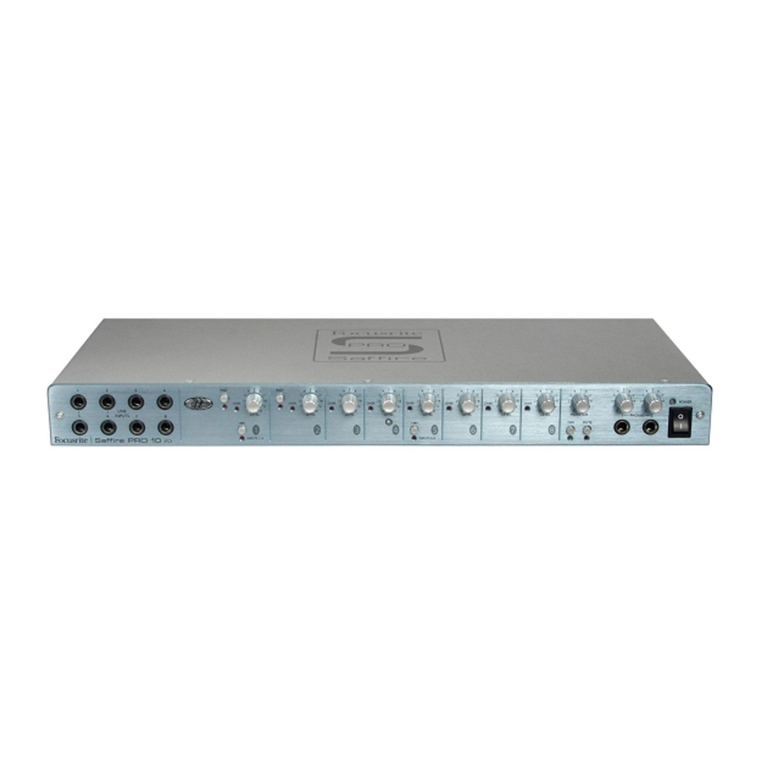
Focusrite
Focusrite Saffire Pro 10 I/O Guide user manual
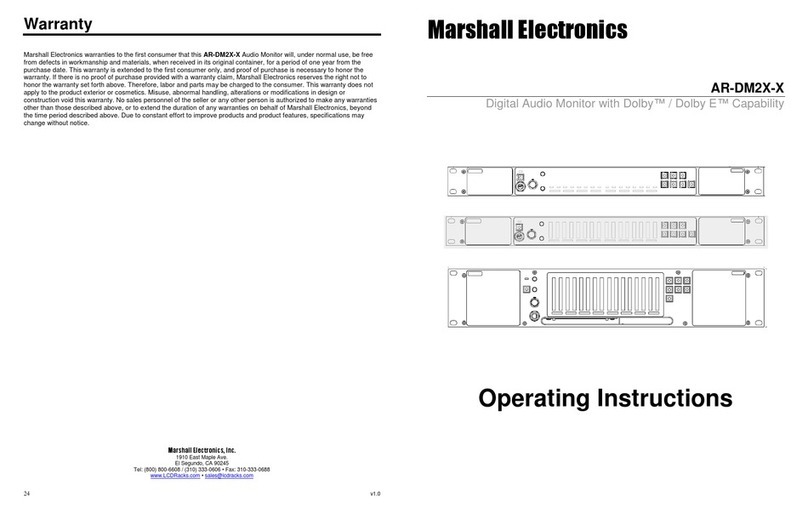
Marshall Electronics
Marshall Electronics AR-DM2X-X operating instructions

Pepperl+Fuchs
Pepperl+Fuchs NVOR-200 manual
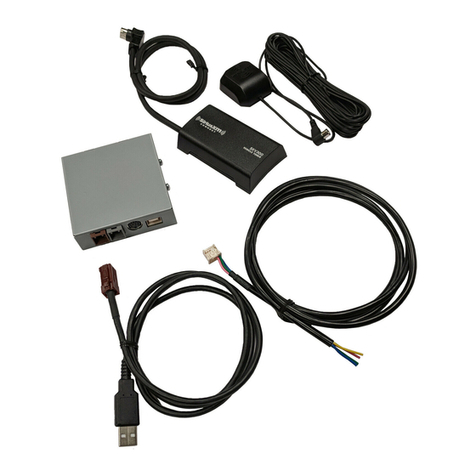
Vais Technology
Vais Technology GSR SiriusXM SXV300 owner's manual
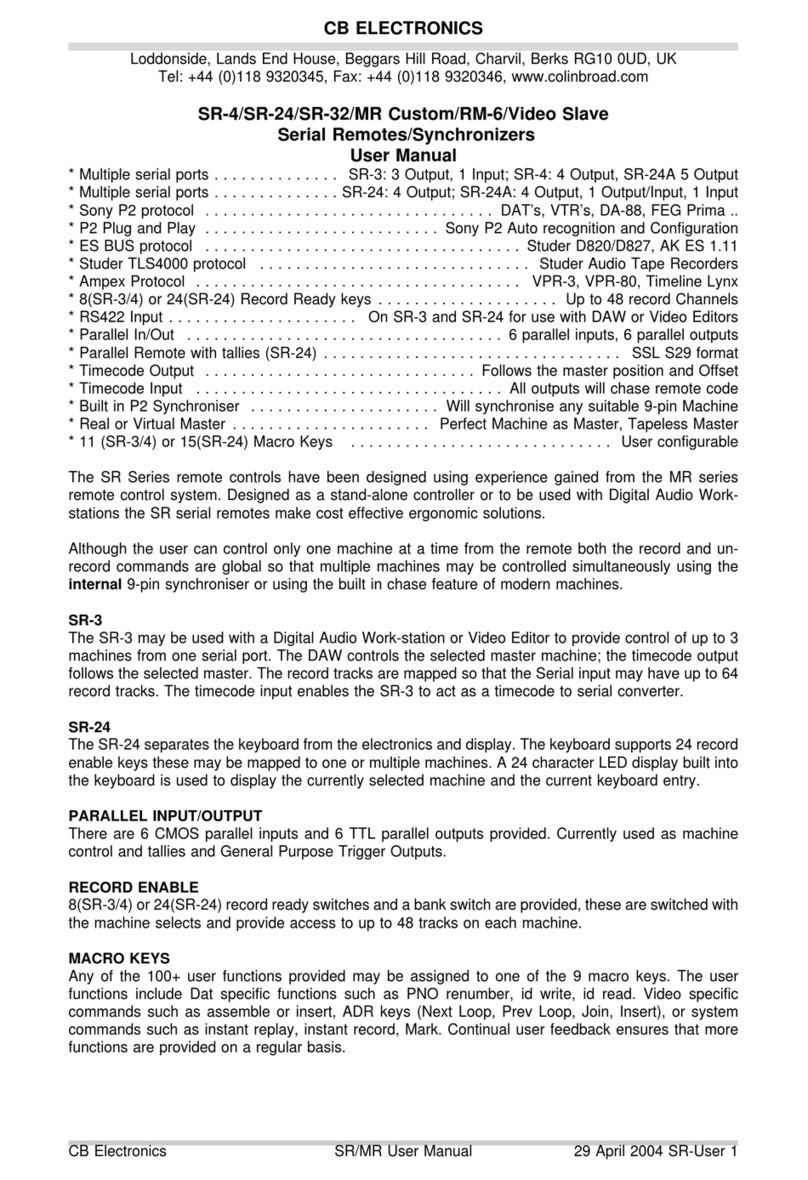
CB ELECTRONICS
CB ELECTRONICS SR-3 user manual

Renu Electronics
Renu Electronics FP4043TN-E quick start guide

